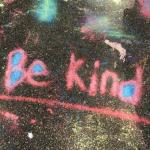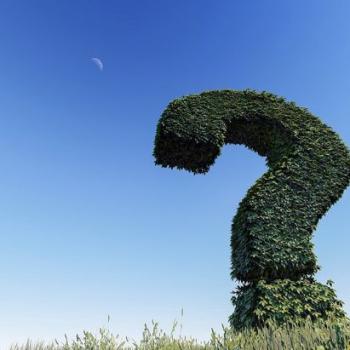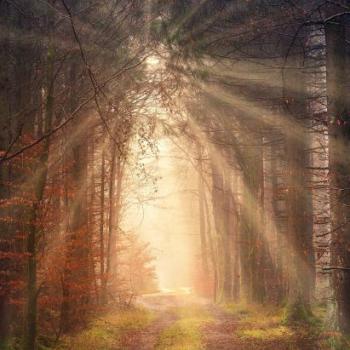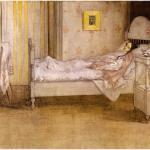
When I quit smoking in 1996, I decided to carry a book with me everywhere I went. Whenever I had an urge to smoke, I would read instead. My reasoning was simple. I had spent twelve years of my life poisoning my body. It was time to start sowing good seeds, including feeding my mind with constructive material.
This new habit improved my life dramatically.
In the beginning, I mostly read books about self-help and spirituality. I regarded self-help books as repair manuals and spiritual books as aspirational guides, devouring them like travel brochures about distant lands I was eager to visit. I was endlessly curious about mystical practices, insights into the elusive topic of enlightenment, stories of awakening, ancient teachings, and the like.
My main area of interest was Eastern mysticism. In addition to reading and rereading books by my teacher, Yogi Shanti Desai, I read several volumes by Paul Brunton—a British spiritualist that wrote romantically about his encounters with Indian ascetics—and scoured bookstores for additional reading material.
Yogananda’s Zen Koan
When I read Autobiography of a Yogi by Paramahansa Yogananda, both in my native Icelandic and English, I was mesmerized. Yogananda intimately described India’s holy men, portrayed various supernatural experiences, detailed his relationship with his guru, Sri Yukteswar, and previewed his Kriya-Yoga system for meditation.
Two things stayed with me from that book.
One was Yogananda’s emphasis on servant leadership. From the time he was a teenager and put in charge of his guru’s ashram, he always asked how he could serve the ones he was charged with leading rather than bossing them around. On that front, he was well ahead of his time.
The other was a question central to his spiritual quest: “What is behind the darkness of closed eyes?” I took those words into my meditation practice, returning to them over and over like a Zen Koan.
Yogic Scriptures
I also read the essential texts of yoga philosophy with a particular focus on three books, the Upanishads, the Yoga Sutras of Patanjali, and the Bhagavad-Gita, all of which I have read and reread over the years.
The Gita—as it is affectionately known—became my primary source of inspiration, and I bought several different translations. Swami Prabhavananda and Christopher Isherwood translated my preferred version (quoted), but I also purchased the so-called everyman translation by Gandhi and two translations in Icelandic, one directly from English and the other directly from Sanskrit. I even had a favorite passage.
“Know this Atman
Unborn, undying,
Never ceasing,
Never beginning,
Deathless, birthless,
Unchanging for ever.
How can It die
The death of the body?Knowing It birthless,
Knowing It deathless,
Knowing It endless,
For ever unchanging,
Dream not you do
The deed of a killer,
Dream not the power
Is yours to command it.Worn-out garments
Are shed by the body:
Worn-out bodies
Are shed by the dweller
Within the body.
New bodies are donned
By the dweller, like garments.Not wounded by weapons,
Not burned by fire,
Not dried by the wind,
Not wetted by water:
Such is the Atman,
Not dried, not wetted,
Not burned, not wounded,
Innermost element,
Everywhere, always,
Being of beings,
Changeless, eternal,
Forever and ever.”
I have read those words hundreds of times, especially before and after meditation, and have been lucky enough to get glimpses of the birthless, deathless, changeless, always-present essence of who I am.
It seems simple enough, but when everything else falls away, there it is.
What I appreciated most about the Gita was that even though it centered on the story of Krishna and Arjuna on the battlefield, no one claimed it was a historical document. Instead, the story was supposed to be instructional, read on many levels for inspiration and insights. It contained lessons for both daily life and spiritual life. I sought its counsel regularly.
Western Seekers Who Were Captivated by Eastern Thought
As I immersed myself in these ancient Eastern texts, I looked around for other Western seekers who had been equally captivated by oriental thought.
The Emperor’s New Clothes
In Buddhist monk Jack Kornfield, I found a man trying to balance East and West. In his classic, A Path with Heart, Kornfield described his return from eight years in a monastery where he had been enlightened “from the throat up.” He said that after years of meditating, he was great at reaching numinous states and visualizing loving-kindness. However, he had no idea how to handle money, care for his body, or be in relationships.
His chapter on living in spiritual communities—aptly titled The Emperor’s New Clothes—provided me with behind-the-scenes-views of dysfunctional spiritual communities that resonated with what I had experienced in the New-Age movement years prior.
Hesse’s Spiritual Insights
Herman Hesse’s Siddhartha was another treasure. In that book, the author wrote fictionally about the road to enlightenment for the Buddha and his discovery of the middle way. The portrayals of Siddhartha’s time by the river, where he realized that the river could teach him anything he needed to know if he just listened, were especially dear to me. I had felt similarly about my natural surroundings in Iceland when I took the time to listen.
One such incident stands out.
I was walking my dog on a frosty winter night, and the full moon was glowing in its splendor. As I glanced at its reflection in a puddle, I had a sudden realization about the origin of light. The puddle reflected the moon, the moon reflected the sun, the sun reflected the primal energy of the universe, and that primal energy was reflected in everything and everyone.
Namaste!
In Hesse’s Narcissus and Goldmund, about a hedonistic philanderer and a monk, I saw elements of myself reflected. This was before I quit drinking, so I naturally wondered if following my senses with complete abandon would lead me to end like Narcissus… but I decided that I was better than him, on another path. Later, I revisited that book and found more similarities than I had been willing to admit during the first reading.
The Peaceful Warrior
Dan Millman was yet another Western author I admired. His best-selling novel Way of the Peaceful Warrior became a guidebook early in my sobriety. I hung on every word from the lips of his fictional character Socrates. Millman did an excellent job of corralling essential elements from many spiritual traditions and presenting them in funny exchanges between the main character and his teacher.
After getting Millman’s blessing, I briefly worked on a play in Icelandic based on the book but had to stop working on it when Millman withdrew his permission after signing a movie deal (understandably so).
Increasing My Capacity
With every book I scavenged through, my capacity for reading grew. At first, it took me about two to three months to finish a book. Within a year, I was down to a book-per-month, then one every three weeks, then one every two weeks. I didn’t crack the book-per-week threshold until after attending a speed-reading course. Soon after, my reading spree accelerated to the point where I could read four books in one week.
On the spiritual front, I was reading about Eastern mysticism, Buddhism, transcendent experiences, meditation, healing, the chakras, and whatever else I could get my hands on. My favorite authors—in addition to those I’ve already mentioned—were Gandhi, Dalai Lama, Thich Nhat Hahn, Shunryu Suzuki, Krishnamurti, Swami Sivananda, Ralph Waldo Emerson, Deepak Chopra, Susan Trott, Kahlil Gibran, Viktor Frankl, and Swami Vivekananda.
With time, I also dove into other topics, such as psychology, social sciences, history, and politics. That made me realize I had malnourished my intellect by dropping out of college and was, in fact, more intelligent than I thought. Sadly, I never returned to traditional schooling—another one of life’s regrets. I’ve had a few, just like Sinatra.
Overflowing Cup: Changing My Approach
Several years into my insatiable reading habit, the expected happened. My cup overflowed. I was not processing new material at the rate I took it in. The speed-reading techniques were great for sorting through stuff but left little substance. I realized that if something was worth examining, I had to decelerate, digest the material, sit with it, let it resonate, compare it to what I knew, and see if it brought any additional value to my spiritual practice.
Recently, I found a passage by Karen Armstrong that gave homage to this delightful art of reflection.
“Theology is—or should be—a species of poetry, which read quickly or encountered in a hubbub of noise makes no sense. You have to open yourself to a poem with a quiet, receptive mind, in the same way you might listen to a difficult piece of music… If you seize upon a poem and try to extort its meaning before you are ready, it remains opaque. If you bring your own personal agenda to bear upon it, the poem will close upon itself like a clam, because you have denied its unique and separate identity, its inviolate holiness.”
Common Themes
When I slowed down and allowed myself to contemplate the material, several common themes emerged from the spiritual books I had read.
For one, most of them claimed that modernity was somehow broken, in essence, too fast, too corrupt, too materialistic, and too sensual. I found such claims equally in books that had been newly published and those that had been composed hundreds of years ago. The authors offered several ways to fix those ailments. The spiritual seeker could try to bring back the long-lost peace and harmony that had supposedly prevailed in the past (the conservative or romantic approach), work towards a brighter future (the progressive or aspirational approach), or rise above the inherent suffering of duality through meditation (the nondual or transcendental approach). It’s an oversimplification, I know, but those were the most noticeable reoccurring trends I came across.
What I found most interesting, though, was that no matter the diagnosis or general theme of the proposed treatment, there was always a focus on action. That’s what I liked most about the Eastern approach. The spiritual seeker was never instructed to pray to God and wait for him to fix it. No. Do the physical, emotional, mental, and social work, practice meditation, serve others to the best of your capacity, renounce material obsessions, eat clean foods, and increase your capacity for compassion… in short, do something, and become the vehicle of your enlightenment.
Focus on Action
When I took this focus on action to heart, I recognized that reading did little for my spiritual life by itself. Having a sky-high stack of books on my nightstand was likelier to crush me to death than to bring spontaneous enlightenment. Pursued on its own, reading was akin to mental gymnastics or intellectual self-gratification, but, in coordination with other spiritual practices, such as mediation, service, and contemplation, it was indispensable.
And yet—action did not need to be immediate.
My literary explorations sowed many seeds over the years. Some came to fruition immediately; others lay dormant for years before germinating and sprouting, often at the right time. Furthermore, my exposure to a variety of stories and points of view slowly increased my capacity for empathy and for what Einstein concluded was the most important ability for human advancement; to be able to hold opposing thoughts and ideas in my mind without immediately agreeing or disagreeing with them.
Fueling My Spiritual Search
For over twenty years, my love for reading has fueled my spiritual search and kept me interested. I agree with Stephen King when he says that books are time machines. They preserve insightful philosophies, valuable knowledge, significant perspectives, precious stories, and meaningful wisdom—encapsulating all of it for future generations.
Gudjon Bergmann
Author and Mindfulness Teacher
Amazon Author Profile
Recommended books:
- Monk of All Faiths: Inspired by The Prophet (fiction)
- Spiritual in My Own Way (memoir)
- Co-Human Harmony: Using Our Shared Humanity to Bridge Divides (nonfiction)
- Experifaith: At the Heart of Every Religion (nonfiction)
- Premature Holiness: Five Weeks at the Ashram (novel)
- The Meditating Psychiatrist Who Tried to Kill Himself (novel)
Picture: CC0 License
















